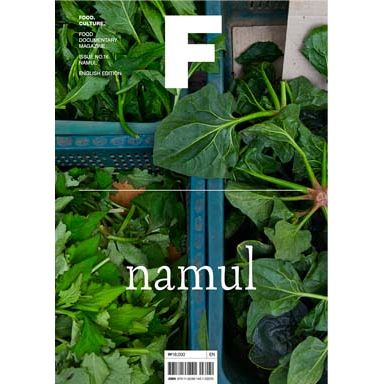Magazine F: Namul (Issue 16)
Magazine F: Namul (Issue 16)
Couldn't load pickup availability
Namul represents an aspect of Korean food culture in which environmental characteristics, such as seasons and regional landscapes— in other words, the energy of nature—are consumed as a whole. Namul contains both universal and specific characteristics as a food ingredient as a variety of greens grown in mountains or fields are cooked in diverse ways. The spectrum of regional namul cultures is so wide and varied that it cannot be explained away neatly as a common tradition or vegetarianism. MAGAZINE F: NAMUL attempts to look into namul across various languages by meeting fine dining chefs who explore seasonal ingredients, food researchers who explore the history behind these dishes, and people who explore changing seasons through their meals.
Namul refers to wild edible plants foraged from fields and mountains or to seasoned herbal dishes. Although these edible plants are also found in neighboring countries like Japan and China, no place has cooked with namul for as long as Korea. An excellent side dish to steamed rice, these greens are an exciting addition to stews and even desserts. The montane Korean terrain naturally gave way to a culture of feasting on namul, with spring namul becoming an iconic Korean vegetable-based food staple that stands second only to kimchi. Today, local varieties like go-sa-ri bracken from Jeju-do Island, cham-du-reup fatsia shoots and nun-gae-seung-ma goatsbeard from Gangwon-do Province, and bang-pung namul coastal hog fennel from the coastal areas of Uljin, Gyeongsangbuk-do Province, are growing in popularity as a way to explore regional cuisines and bring foraged ingredients to the table.


